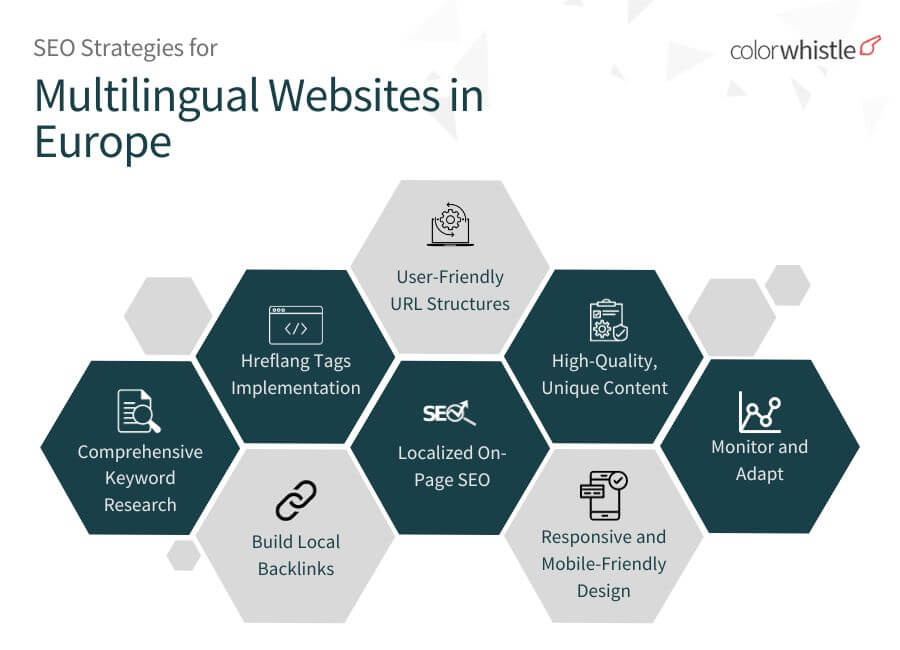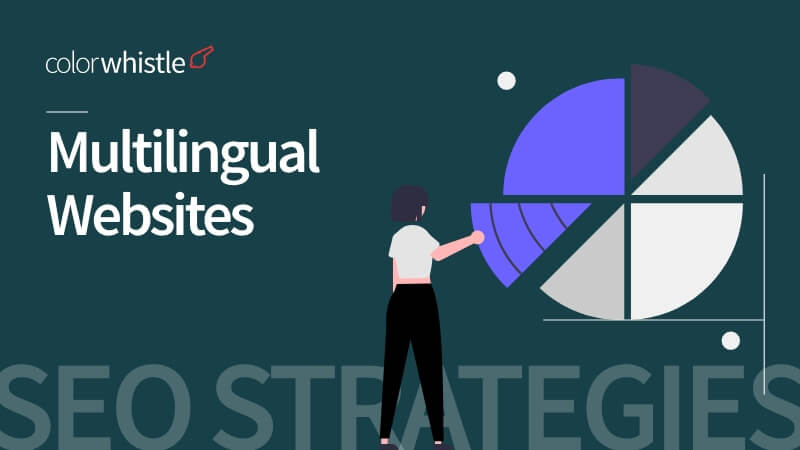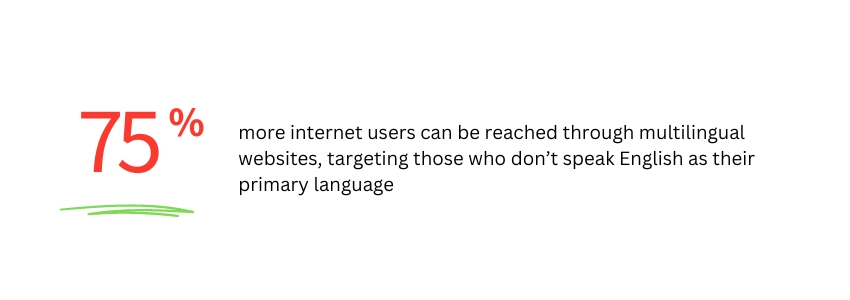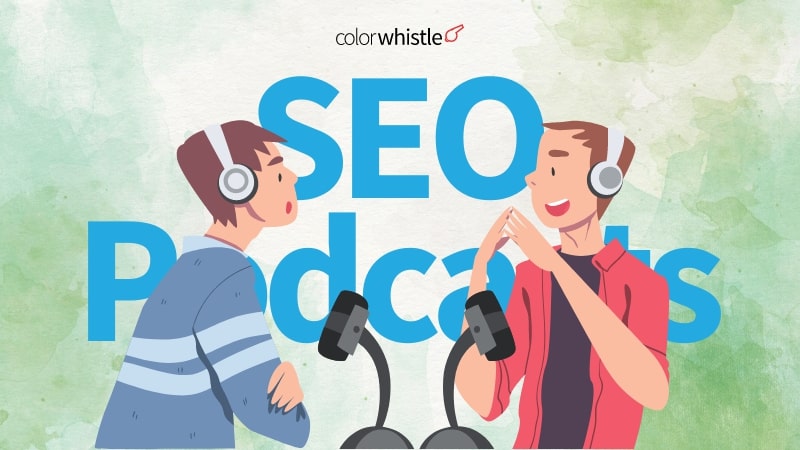SEO strategies for multilingual websites demand a nuanced approach. This is essential for effectively targeting diverse audiences across the continent’s rich tapestry of languages and cultures.
In today’s globalized digital landscape, having a strong online presence is crucial for businesses aiming to expand their reach. For multilingual websites, effective SEO ensures that your content is discoverable by diverse audiences.
Imagine you run a small artisanal chocolate business in Belgium, with delectable chocolates that have garnered a loyal following. To share your sweet creations across Europe, effective SEO is essential—not just to attract attention but to convert visitors into customers. In a region where each country boasts its own unique culture, language, and consumer preferences, understanding these challenges can unlock vast opportunities for online businesses like yours. If you’re unsure about which SEO strategies to implement, partnering with a well-known SEO service company can enhance the visibility of your multilingual website.
Whether you’re a multinational corporation or a small e-commerce startup, mastering the intricacies of SEO strategies for multilingual websites in Europe can be key to unearthing untapped possibilities in this vibrant market.
If you’re ready to take your online presence to the next level in Europe and make sure that your website speaks the language of your target audience, keep reading.
What is Multilingual SEO?
Multilingual SEO optimizes website content to rank in search engines across multiple languages. It includes translating and localizing content, implementing hreflang tags, and conducting keyword research for different languages. The goal is to enhance visibility and user experience for diverse audiences, boosting organic traffic and expanding global reach.
Why is Multilingual Website SEO Important?
- Access to a Global Audience
- Cultural Relevance
- Reduced Bounce Rates
- Competitive Edge
- Improved User Experience
- Enhanced Search Engine Rankings
- Global Brand Perception
- Better ROI on Localization Efforts
SEO Strategies for Multilingual Websites in Europe

1. Comprehensive Keyword Research
Comprehensive keyword research forms the bedrock of every victorious SEO strategy. When dealing with multilingual websites, the complexity increases exponentially. Begin by identifying keywords in each target language that are relevant to your products or services. Use tools like Google Keyword Planner, SEMrush, or Ahrefs to discover keywords with low competition and high search volumes. Focus on long-tail keywords to capture more specific search intent.
2. Hreflang Tags Implementation
Hreflang tags are HTML tags that indicate the language and regional targeting of a webpage. They guide search engines to display the appropriate version of your webpage to users based on their location and language preference. Execute hreflang tags in the HTML header of each webpage to ensure that search engines understand the relationship between different language versions of your content. This helps avoid content duplication issues and enhances user experience.
Also Read
3. User-Friendly URL Structures
The URL structure of your website wields substantial influence over your SEO performance. For multilingual websites, use a URL structure that’s easy to understand and navigate. A recommended approach is using subdirectories (example.com/en/ for English, example.com/fr/ for French) instead of subdomains or separate domains. This keeps all language versions under the same domain, consolidating SEO authority.
4. High-Quality, Unique Content
Creating high-quality, unique content for each language version of your website is vital. Avoid using automated translation tools, as they often produce inaccurate or awkward translations. Instead, invest in professional human translation services or create unique content tailored to the linguistic and cultural nuances of each target audience. Google’s algorithm rewards websites with valuable and relevant content.
5. Localized On-Page SEO
Customize your on-page SEO elements for each language version. This includes optimizing meta titles, meta descriptions, headers, and image alt text in the target language. Conduct thorough research to understand how users in each region search for products or services similar to yours. This will help you craft content that resonates with local audiences and increase your website’s visibility.
Also Read
6. Build Local Backlinks
Earning backlinks from reputable websites within the regions you’re targeting can significantly boost your website’s authority and visibility. Collaborate with local influencers, industry publications, and relevant websites to acquire quality backlinks. Local backlinks signal to search engines that your website is a credible source of information for users in that region.
7. Responsive and Mobile-Friendly Design
User experience is a crucial factor in SEO. Ensure your website redesign is responsive and mobile-friendly, as a significant portion of users access websites through mobile devices. Mobile-first indexing by Google entails that your website’s mobile version takes precedence as the primary version for both indexing and ranking purposes. A seamless mobile experience enhances user engagement and search engine rankings.
8. Monitor and Adapt
SEO is an ongoing process. Always keep an eye on your website’s performance by using tools such as Google Analytics and Google Search Console. Monitor keyword rankings, assess organic traffic trends, and analyze user behavior to pinpoint opportunities for enhancement. Pay attention to the feedback from users in different regions and adjust your strategies accordingly.
9. Leverage Local Social Media and Directories
Incorporate local social media platforms and online directories that are popular in each target market. Engage with local audiences through region-specific social media channels and list your website on relevant local directories. This helps improve brand visibility, drive traffic, and build credibility in each language region.
Also Read
10. Use Regional Hosting and CDN Services
Host your website on servers located within your target regions or use a content delivery network (CDN) to reduce load times. Faster load times improve user experience and can positively impact your SEO ranking. Choosing a hosting provider with servers close to your audience can also signal to search engines that your site is relevant to those specific regions.
11. Implement Schema Markup for Local Businesses
Use schema markup to provide search engines with detailed information about your business, such as location, services, and operating hours. For multilingual websites, make sure the schema is appropriately translated and localized for each region. This can help improve your visibility in local search results and enhance your click-through rates.
12. Create Region-Specific Content Hubs
Develop content hubs or resource sections tailored to each region’s language and cultural context. These could include blog articles, case studies, or guides that address your target audience’s unique needs and interests in each country. This not only boosts your SEO by providing localized, relevant content but also positions your brand as an authority in multiple markets.
Wrap-Up
Successfully optimizing multilingual European websites requires a deep understanding of local markets and a nuanced approach. Key elements such as comprehensive keyword research, proper implementation of hreflang tags, and tailored content form the foundation of your success. Additionally, user-friendly URLs and localized on-page SEO services significantly improve user experience.
Continual improvement is essential in this dynamic landscape. Building local backlinks and ensuring a responsive mobile design will bolster your site’s visibility. Data-driven insights are crucial for adapting to ever-changing algorithms and evolving user behaviors.
Navigating Europe’s digital landscape with a multilingual website demands technical skill and cultural empathy. By marrying effective SEO tactics with a deep understanding of diverse audiences, your site can thrive across languages and leave a lasting impression on European users.
Browse through our ColorWhistle page for more related content and to learn about our services. To get in touch with us and learn more about our services, please visit our SEO pricing packages page and Contact Us today.
What’s Next?
Now that you’ve had the chance to explore our blog, it’s time to take the next step and see what opportunities await!







